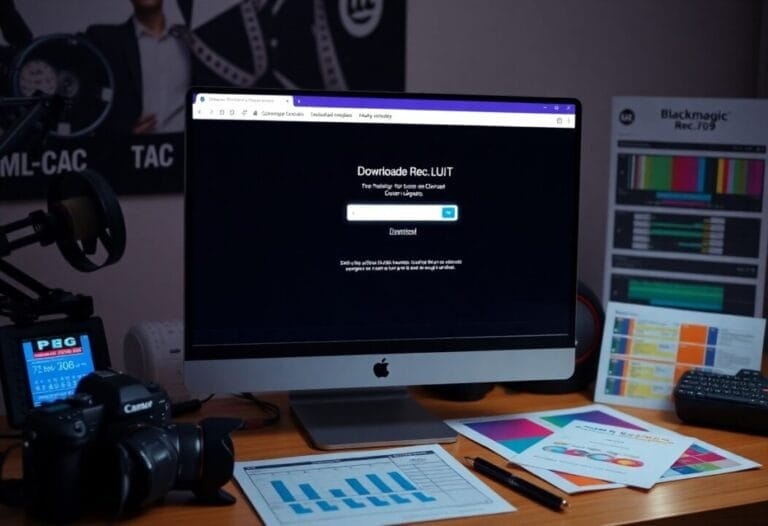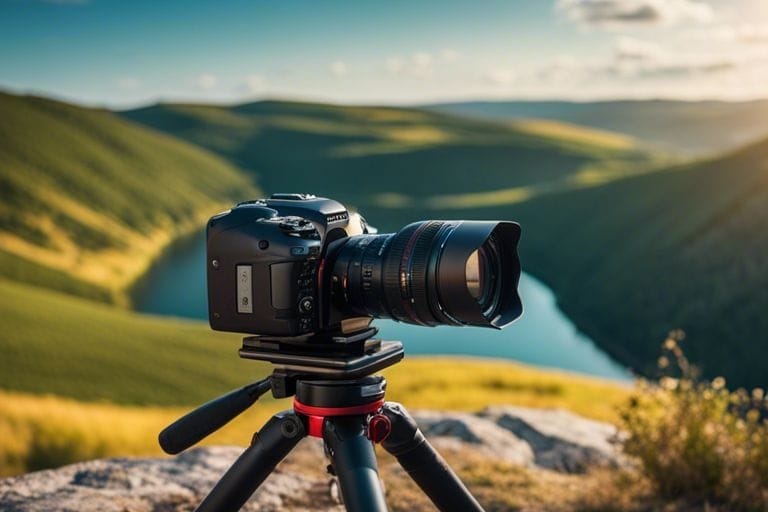Perplexed by the plethora of post-production software options available, I’ve found an invaluable tool in Blackmagic’s DaVinci Resolve for editing and color grading Blackmagic footage. With unparalleled integration with Blackmagic cameras and codecs, DaVinci Resolve provides a seamless post-production process, saving time and ensuring the highest quality output. The software’s powerful features for color correction and editing provide an all-in-one solution for the most demanding post-production tasks. In this blog post, I’ll delve into the advantages of using DaVinci Resolve for working with Blackmagic footage, and why it has become my go-to tool for professional post-production work.
Advantages of using Blackmagic’s DaVinci Resolve
Your post-production workflow can greatly benefit from using Blackmagic’s DaVinci Resolve, especially when working with Blackmagic footage. The software offers a comprehensive set of tools for color grading, editing, and visual effects, making it a one-stop solution for all your post-production needs. Let’s delve into some of the key advantages of using DaVinci Resolve for your Blackmagic footage.
Color grading capabilities
One of the standout features of DaVinci Resolve is its exceptional color grading capabilities. With its advanced color correction tools, you have the ability to manipulate every aspect of your footage’s color and tone with unparalleled precision and control. The software’s unique color grading environment allows for seamless grading of Blackmagic RAW footage, ensuring that you can achieve the exact look you desire for your project.
Integration with Blackmagic footage
DaVinci Resolve is designed to work seamlessly with Blackmagic footage, offering native support for Blackmagic RAW and ProRes files. This tight integration means that you can work with your footage without the need for time-consuming transcoding or conversion processes, allowing you to focus on the creative aspects of your post-production work. Additionally, the software’s support for Blackmagic Design’s cameras and formats ensures that you can take full advantage of your Blackmagic equipment without any compatibility issues.
Powerful editing features
Aside from its impressive color grading capabilities, DaVinci Resolve also boasts powerful editing features that are well-suited for Blackmagic footage. The software’s timeline-based editing interface provides a user-friendly yet highly efficient environment for managing and editing your footage. With features such as advanced trimming, multicam editing, and customizable keyboard shortcuts, you can streamline your editing workflow and focus on crafting a visually compelling narrative for your project.

Workflow efficiency with DaVinci Resolve
Some of the major advantages of using DaVinci Resolve for post-production on Blackmagic footage are related to the efficient workflow it offers. Whether you are editing, color grading, or adding visual effects, DaVinci Resolve streamlines the entire post-production process, allowing for a seamless and productive workflow.
Smooth post-production process
One of the key benefits of using DaVinci Resolve is its ability to handle all aspects of post-production within a single application. This means that I can seamlessly move between editing, color grading, visual effects, and audio without having to switch between multiple software programs. This not only saves time but also ensures that all aspects of the project remain in sync throughout the entire post-production process. Additionally, the real-time collaboration features in DaVinci Resolve allow me to work on projects with multiple team members, further enhancing the smoothness of the post-production process.
Utilizing Blackmagic’s hardware and software synergy
When working with Blackmagic footage, the synergy between Blackmagic’s hardware and software is unparalleled. DaVinci Resolve is optimized to work seamlessly with Blackmagic’s cameras, resulting in a more efficient and streamlined post-production process. This integration allows for optimized performance and reduced rendering times, ultimately saving both time and resources. Additionally, the ability to directly import footage from Blackmagic cameras into DaVinci Resolve without the need for transcoding further enhances the efficiency of the post-production workflow.

Enhanced creative control and flexibility
Despite being primarily known for its color grading capabilities, DaVinci Resolve offers an extensive set of tools for post-production, such as editing, visual effects, and audio post-production. This makes it an all-in-one solution for filmmakers and video editors. The software allows you to have complete creative control over your project, giving you the flexibility to experiment with different looks and styles.
Customizable effects and plugins
One of the advantages of using DaVinci Resolve for post-production on Blackmagic footage is the ability to customize effects and plugins. The software offers a wide range of built-in effects and plugins that you can tailor to your specific needs. Additionally, you can also install third-party plugins to further expand your creative options. This level of customization gives you the freedom to create unique visual effects that suit your project’s aesthetic.
High-quality audio post-production tools
Another advantage of using DaVinci Resolve for post-production on Blackmagic footage is the high-quality audio post-production tools it offers. From audio editing to mixing and mastering, the software provides a comprehensive set of tools to enhance the sound quality of your footage. With features such as Fairlight audio, you can fine-tune every aspect of your audio to achieve professional-grade results. This ensures that your final product has exceptional audio quality, further enhancing the overall viewing experience.
Conclusion
Following this discussion, it is clear that using Blackmagic’s DaVinci Resolve for post-production on Blackmagic footage offers several advantages. The seamless integration with Blackmagic cameras allows for a smoother workflow and maximizes the potential of the footage. The powerful color grading tools, advanced editing features, and audio post-production capabilities make DaVinci Resolve a comprehensive and efficient post-production solution for Blackmagic footage. In addition, the cost-effectiveness and user-friendly interface make it an attractive option for both amateur and professional filmmakers. Overall, utilizing DaVinci Resolve for post-production on Blackmagic footage can significantly enhance the quality and efficiency of the editing process.
FAQ
Q: What are the advantages of using Blackmagic’s DaVinci Resolve for post-production on Blackmagic footage?
A: DaVinci Resolve is specifically designed to work seamlessly with Blackmagic footage, ensuring the highest quality results. Its advanced color grading tools allow for precise adjustments, and its powerful editing features enable efficient workflow for post-production on Blackmagic footage.
Q: How does DaVinci Resolve enhance the post-production process for Blackmagic footage?
A: DaVinci Resolve offers real-time performance for editing and color grading Blackmagic footage, allowing for a smooth and efficient post-production process. Its integration with Blackmagic cameras and codecs ensures optimized compatibility and fast rendering times for high-quality output.
Q: What sets DaVinci Resolve apart as the preferred choice for post-production on Blackmagic footage?
A: DaVinci Resolve’s comprehensive toolset, including professional-grade color grading, advanced editing, visual effects, and audio post-production capabilities, makes it the preferred choice for handling Blackmagic footage. Its support for Blackmagic RAW and ProRes formats, along with its collaborative workflow features, further solidify its position as the industry-leading solution for post-production on Blackmagic footage.
- Best Gimbals for BMPCC 6K in 2025: A Complete Guide - June 11, 2025
- Blackmagic Rec.709 LUT Download - June 11, 2025
- How to Delete Files on Blackmagic 6K - January 8, 2025






